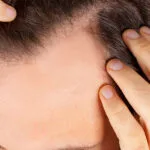Introduction
Hair loss is a common concern affecting millions of people worldwide. For those experiencing hair thinning or balding, finding an effective treatment can be life-changing. One of the most popular and widely used treatments for hair loss is Finasteride. But can finasteride really regrow hair? In this comprehensive guide, we will explore everything you need to know about finasteride, including how it works, its effectiveness, potential side effects, and more.
Understanding Hair Loss
Before delving into how finasteride works, it’s important to understand the basics of hair loss. The most common type of hair loss in both men and women is androgenetic alopecia, also known as male or female pattern baldness. Genetics and hormones, specifically dihydrotestosterone (DHT), largely influence this condition.
The Role of DHT in Hair Loss
DHT is a derivative of testosterone and is known to shrink hair follicles, leading to thinning hair and eventually hair loss. In individuals genetically predisposed to androgenetic alopecia, DHT binds to receptors in hair follicles, causing them to miniaturize and produce thinner, weaker hairs until the follicles stop producing locks altogether.
What is Finasteride?
Pharmaceutical companies initially developed finasteride as an oral medication to treat benign prostatic hyperplasia (BPH), a condition that enlarges the prostate. They market it under the brand names Propecia (for hair loss) and Proscar (for BPH). The drug works by inhibiting the enzyme 5-alpha-reductase, which converts testosterone into DHT. By reducing DHT levels, finasteride can help slow hair loss and potentially stimulate hair regrowth.
How Does Finasteride Work to Regrow Hair?
Finasteride works at the hormonal level to address the root cause of androgenetic alopecia. By inhibiting 5-alpha-reductase, Finasteride reduces the production of DHT in the scalp. Lower DHT levels mean less follicle miniaturization, which can slow the progression of hair loss and help Finasteride regrow hair by promoting the growth of healthier, thicker strands.
Effectiveness of Finasteride
Numerous clinical studies have demonstrated the effectiveness of finasteride in treating male pattern baldness.
Clinical Studies
One of the largest studies involved over 1,500 men with mild to moderate hair loss. Researchers gave participants 1 mg of finasteride daily or a placebo. After two years, the study found that:
- 66% of men treated with finasteride experienced a decrease in hair loss.
- 83% of men in the finasteride group either maintained or increased their hair count.
- Only 17% of men in the placebo group maintained or increased their hair count.
These results indicate that finasteride is effective in both preventing further hair loss and promoting hair regrowth in a significant number of men.
Long-term Effectiveness
Long-term studies have also shown that finasteride remains effective over extended periods. A five-year study demonstrated that continuous use of finasteride resulted in sustained improvements in hair count and thickness. However, users must continue taking Finasteride to maintain its effects. If they stop the treatment, DHT levels will rise again, and hair loss will likely resume.
Can Finasteride Regrow Hair in Women?
While finasteride is primarily prescribed for men, some studies have explored its use in women with androgenetic alopecia. The results are mixed, and the drug is not officially approved for use in women due to potential side effects, particularly in women of childbearing age. Women who are pregnant or may become pregnant should avoid handling finasteride tablets, as the drug can cause birth defects in male fetuses.
How to Use Finasteride to Regrow Hair?
Finasteride is typically taken as a 1 mg tablet once daily. It’s important to follow your doctor’s instructions and take the medication consistently to achieve the best results. Some users may begin to see improvements in as little as three months, but it can take up to a year to see the full benefits.
Dosage and Administration
- Standard Dose: 1 mg daily.
- How to Take: Swallow the tablet whole with water, with or without food.
- Consistency: Take the medication at the same time each day for the best results.
Potential Side Effects of Finasteride
As with any medication, finasteride can cause side effects. Most users tolerate the drug well, but some may experience adverse effects.
Common Side Effects
- Decreased Libido: Some men report a reduced sex drive.
- Erectile Dysfunction: A small percentage of men may experience difficulty achieving or maintaining an erection.
- Decreased Ejaculate Volume: Some users notice a reduction in the amount of semen produced.
Rare and Serious Side Effects
- Breast Tenderness or Enlargement: Rarely, men may experience changes in breast tissue.
- Depression: Some users have reported mood changes and depression.
- Allergic Reactions: Symptoms like rash, itching, or swelling may indicate an allergic reaction and require immediate medical attention.
Managing Side Effects
If you experience side effects, it’s important to discuss them with your doctor. In many cases, side effects may diminish over time. If side effects persist or are particularly bothersome, your doctor may recommend adjusting the dose or discontinuing the medication.
Combining Finasteride with Other Treatments
For enhanced results, some individuals combine finasteride with other hair loss treatments. Two common complementary treatments are minoxidil and hair transplant surgery.
Minoxidil
Minoxidil is a topical treatment that stimulates hair growth and is available over-the-counter in both liquid and foam forms. People often use it along with finasteride to maximize hair regrowth.
- How to Use: Apply directly to the scalp twice daily.
- Benefits: Promotes hair regrowth and thickening.
- Considerations: May cause scalp irritation in some users.
Hair Transplant Surgery
For those with more advanced hair loss, hair transplant surgery can provide significant and lasting results. This procedure involves transplanting hair follicles from one part of the scalp to the thinning or balding areas.
- Procedure: Typically performed under local anesthesia.
- Recovery: Patients can usually return to normal activities within a few days.
- Results: Permanent and natural-looking hair growth.
Realistic Expectations
While finasteride can be highly effective for many users, it’s important to have realistic expectations. Not everyone will experience the same results, and hair regrowth can vary based on factors like age, genetics, and the extent of hair loss.
- Improvement Timeline: Some users see results in three months, but it can take up to a year.
- Extent of Regrowth: Finasteride is most effective for men with mild to moderate hair loss.
- Maintenance: Continuous use is necessary to maintain results.
Who Should Avoid Finasteride?
Finasteride is not suitable for everyone. It’s important to discuss your medical history with your doctor to determine if finasteride is a safe and appropriate treatment for you.
Contraindications:
- Pregnancy: Finasteride can cause birth defects and should not be used by women who are pregnant or may become pregnant.
- Allergies: Individuals allergic to finasteride or any of its components should avoid the medication.
- Liver Disease: Those with liver conditions should use finasteride with caution, as the drug is metabolized by the liver.
Alternative Treatments for Hair Loss
If finasteride is not suitable for you, there are several alternative treatments available.
Topical Treatments
- Minoxidil: An over-the-counter topical solution or foam that stimulates hair growth.
- Ketoconazole Shampoo: An anti-fungal shampoo that may help reduce scalp DHT levels.
Oral Supplements
- Biotin: A vitamin that supports hair health.
- Saw Palmetto: A natural supplement that may reduce DHT levels.
Laser Therapy
Low-Level Laser Therapy (LLLT): A non-invasive treatment that uses red light to stimulate hair growth.
Consulting a Specialist
If you’re considering finasteride or any other hair loss treatment, consulting with a dermatologist or hair loss specialist is essential. They can provide a thorough evaluation, recommend the most appropriate treatment options, and monitor your progress.
Conclusion
Finasteride is a proven and effective treatment for male pattern baldness, capable of slowing hair loss and promoting hair regrowth in many users. While it comes with potential side effects and requires continuous use to maintain results, it remains a popular choice for those seeking to combat hair loss. By understanding how Finasteride can regrow hair, its benefits, and its limitations, you can make an informed decision about whether this treatment is right for you. Always consult with a healthcare professional before starting any new medication or treatment regimen for hair loss.
FAQs
Clinical studies have shown that finasteride can effectively reduce hair loss and promote hair regrowth in many men. About 66% of men taking finasteride experienced some regrowth, and over 80% stopped losing hair.
Most users see a reduction in hair loss within three to six months of daily use. Noticeable hair regrowth typically occurs after six to twelve months of consistent use.
Doctors generally prescribe finasteride for men with androgenetic alopecia. They do not recommend it for women, especially those who are or may become pregnant, due to the risk of birth defects.
The standard dosage for treating hair loss is 1 mg per day. This dose is effective for most men and is lower than the dosage used for treating BPH.
Common side effects include decreased libido, erectile dysfunction, and ejaculation disorders. These side effects are typically reversible upon discontinuation of the medication. However, some men may experience persistent sexual side effects even after stopping the drug.
Finasteride is generally not recommended for women due to the potential for severe birth defects. Women of childbearing age should avoid handling crushed or broken tablets.
Yes, people often use Finasteride with other treatments, such as Minoxidil (a topical treatment), for better results. Always consult a healthcare provider before combining treatments.
If you stop taking finasteride, any hair regrowth you’ve experienced will likely be lost within 12 months, and hair loss will resume.
Yes, finasteride is a prescription medication. You will need to consult with a healthcare provider to obtain it.
Most men can safely use Finasteride long-term, but they should have regular check-ups with a healthcare provider to monitor potential side effects.
In rare cases, finasteride can cause more serious side effects like breast tenderness or enlargement, depression, and high-grade prostate cancer. Discuss these risks with your doctor.
Yes, there is a generic version of finasteride available, which is usually more affordable than the brand-name version (Propecia).
Finasteride should be stored at room temperature, away from moisture and heat. Keep it out of the reach of children.
References:
- Finasteride: a review of its use in male pattern hair loss: https://pubmed.ncbi.nlm.nih.gov/9951956/#:~:text=Conclusions%3A%20Oral%20finasteride%20promotes%20scalp,which%20treatment%20options%20are%20few.
- Guidelines on the use of finasteride in androgenetic alopecia: https://ijdvl.com/guidelines-on-the-use-of-finasteride-in-androgenetic-alopecia/
- Use of Finasteride in the Treatment of Men With Androgenetic Alopecia (Male Pattern Hair Loss): https://www.sciencedirect.com/science/article/pii/S0022202X15529357














